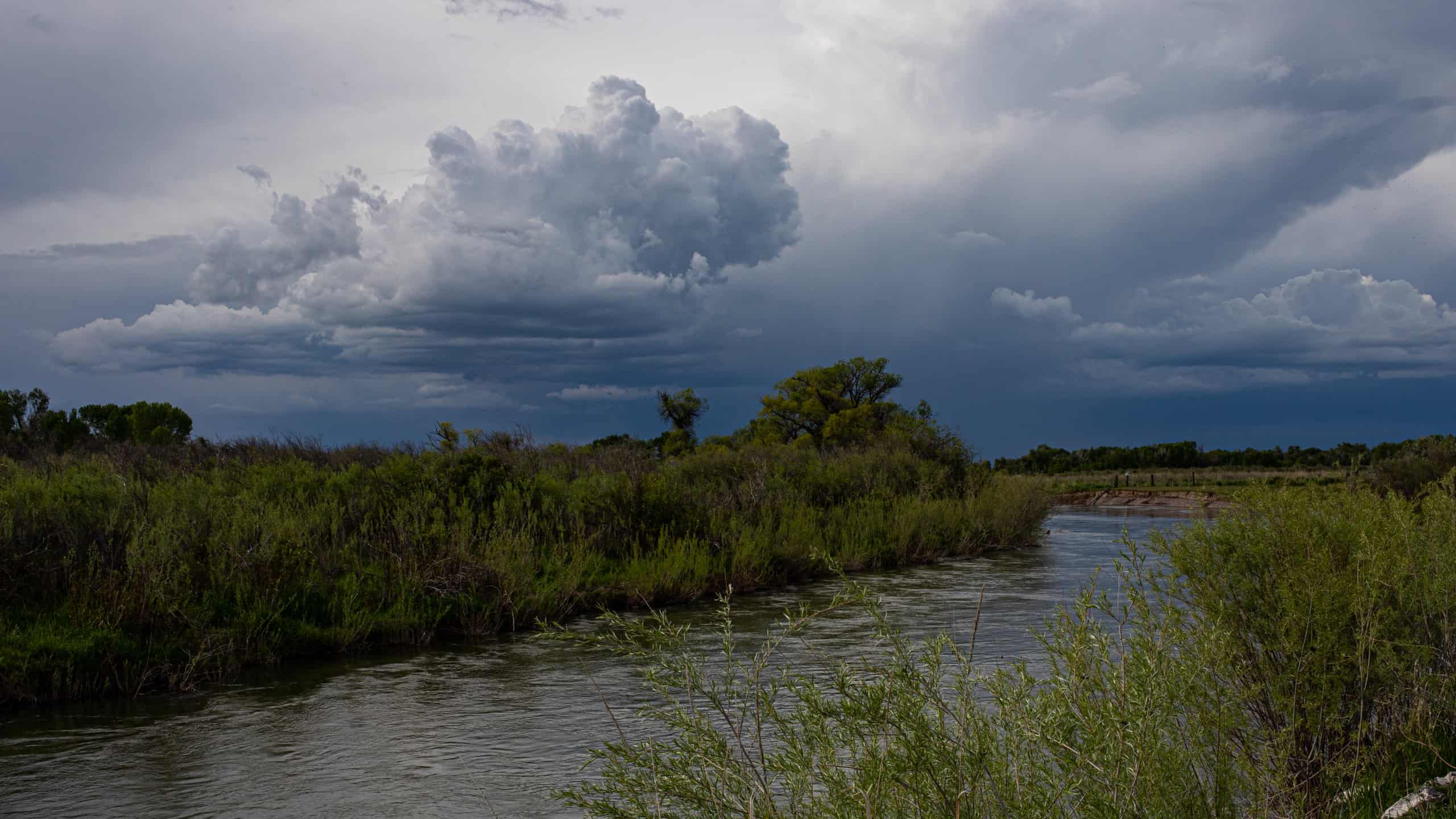There is still plenty of time to get out this fall for some excellent duck hunting, in all areas in Idaho. While there may only be a few good weeks left in the northern and eastern sections of the state things are just getting started in the southern counties. There are 31 Wildlife Management Areas in Idaho with 20 of them considered good for duck hunting. Yes the WMA on the Snake River are the most popular hot spots for hunting but there are plenty of other rivers, lakes ponds and fields that migrating ducks stop along their migrations. Whether you are a seasoned duck hunter or this is the year you want to give it a try, here is everything you need to know about duck hunting season in Idaho including season dates, bag limits and more!
What Kinds of Ducks are in Idaho?
In Idaho you have quite a variety of ducks, some are just passing through while others will stay until mid-winter. The three most harvested duck in Idaho are the mallard, wigeon and green-winged teal, but there are plenty of other varieties as well. Some of the most common duck species in Idaho include:

In Idaho you have quite a variety of ducks, some are just passing through while others will stay until mid-winter.
©Kannan Sundaram/Shutterstock.com
- Mallard
- Wigeon
- Green-winged teal
- Merganser
- American Coot
- Redhead
- Gadwall
- Pintail
- Canvasback
- Scaup
Where can you Duck Hunt in Idaho?

There are 31 Wildlife Management Areas in Idaho with 20 of them considered good for duck hunting.
©Katty1489/Shutterstock.com
The Snake River has some of the most epic duck hunting in Idaho. Finding your sweet spot along the river to set up your blind in the reeds and brush and then waiting for your decoy spread to attract a flock of mallards is what this is all about. You can also float the shoreline, quietly blending in as you try to flush out ducks to create some movement.
Besides the Snake, you can duck hunt in five of the seven regions that have multiple Wildlife Management Areas including the Upper Snake, Panhandle, Magic Valley, Southeast and Southwest Regions. The Boundary-Creek Smith WMA is the farthest north and borders Canada so for early season duck hunting this is a great option. The C.J. Strike WMA is one of the largest WMA’s in the state and has excellent hunting as well.
What are the Hunting Areas in Idaho?
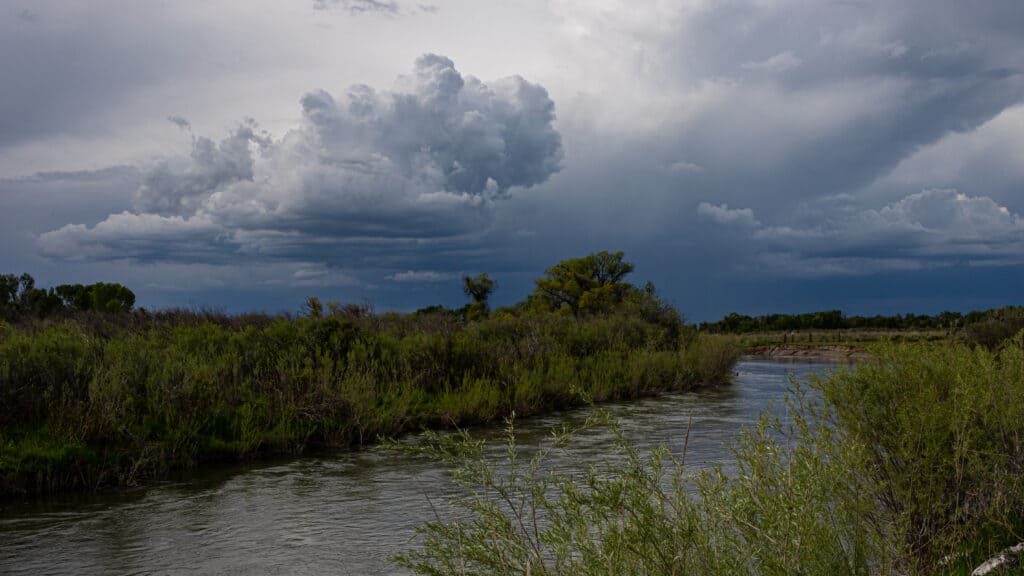
The shooting hours in Idaho are ½ hour before sunrise to sunset.
©Wayne Broussard/Shutterstock.com
Idaho is divided into three areas. Area 3 is the northern most part of the state in the panhandle, Area 2 is the far eastern counties as well as Valley county and the Fort Hall Indian Reservation. All other land falls into Area 1, mostly the central and southern counties. A map of the hunting areas can be found on the Idaho Fish and Game website.
Duck Hunting Season Dates in Idaho
| Species | Area 1 | Area 2 | Area 3 |
| Ducks, Mergansers, Wilson’s Snipe, American Coot | Oct. 19-Jan. 31 | Oct. 1-Jan. 13 | Oct. 1-Jan. 13 |
| Scaup | Nov. 7-Jan. 31 | Oct. 1-Dec. 25 | Oct. 20-Jan. 13 |
Other Season Dates
| All Zones Statewide | |
| Youth and Veterans/Active Military Waterfowl Hunting Weekend | Sept. 24-25, 2022 |
Bag Limits and Possession Limits for Duck Hunting in Idaho
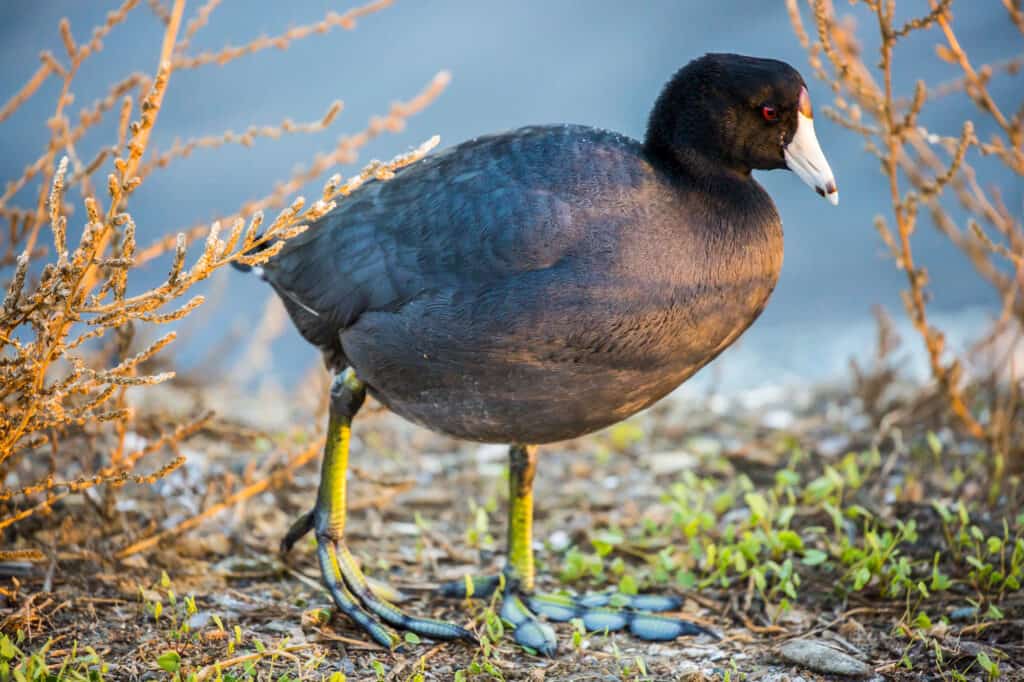
The bag limit in Idaho for coots is 25.
©yhelfman/Shutterstock.com
The daily bag limit is 7 for ducks of any kind except not more than:
- 2 female mallard
- 2 redhead
- 1 pintail
- 2 canvasback
- 2 scaup
| Species | Bag Limits | Possession Limits |
| Ducks | 7 | 21 |
| Wilson’s snipe | 8 | 24 |
| Coots | 25 | 75 |
What are the Shooting Hours?
The shooting hours in Idaho are ½ hour before sunrise to sunset. Use this handy chart to look up the start and end times for each area and county. It is important to note the hunting hours so you can plan ahead and leave plenty of time for setting up your blind and decoy spread.
Gear up! What you Need for Duck Hunting
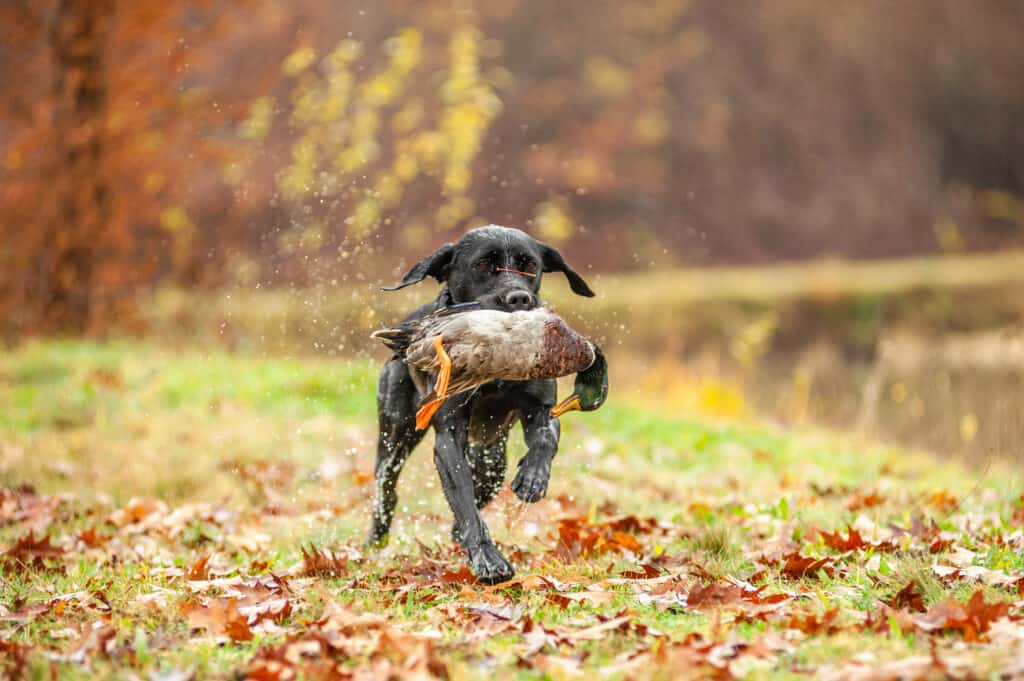
Dogs are hunters by nature, which is one reason they like toys so much.
©Anna Pozzi – Zoophotos/Shutterstock.com
If you will be pass shooting on the Snake River, for example, you might not need much gear at all. There are plenty of areas to hide in the reeds and brush along the river and wait for a dozen or so ducks to fly by. You might only need a good pair of waders to retrieve your catch. On the other hand if you enjoy the game of enticing the ducks to come to you, you will need a spread of decoys and a heavily camouflaged blind. Here is a starter list of gear you might need for duck hunting season in Idaho:
- Shotgun: a 12 gauge or 20 gauge
- Gun case/bag
- Shells: 3” shells are common, depends on the duck species you are targeting
- Duck blind or boat blind: The most common duck blind is an A-frame from which you can stand up in and can accommodate 1-4 people. Commercially made, easy-to-set up blinds are great to have but you can also construct one of your own. Other waterfowlers prefer using simple layouts, which are like camouflaged sleeping bags on the ground that provide warmth and cover. If you are hunting from a boat, kayak or canoe you will want to provide the most camouflaged look as you can.
- Life vest or PFD: On that last note, if you are hunting from a boat always wear a properly fitting life vest or PFD. They make some lightweight and without foam in the shoulders just for duck hunting.
- Decoys: Choosing the best decoys and deciding how you want to set up your spread is the strategic part of the sport. Most spreads include around a dozen decoys but you can have more to attract a variety of ducks or less. Adding in goose decoys creates a realistic look and can increase your success. Finding realistic looking lightweight decoys is your best bet.
- Camo: Getting camo that matches your surroundings is very important, so choose your location first then pick out clothes/jackets/waders that match. Will you be field hunting, river hunting or maybe you need to blend in with a flooded forest. Don’t forget to get a comfortable face covering or use face paint as well.
- Duck callers: Experiment with a few different callers to see what works for you. Practice makes perfect so take time days and weeks before your first hunt of the season to brush up on your calls.
- Waders and Boots: If you are hunting in the panhandle in January, let’s face it, its going to be cold. Southern Idaho is going to be cold in January as well so plan ahead. You are going to need a nice pair of lined waders and boots. Some come as a one-piece unit or you can buy separate footless waders and add in your favorite boots.
- Dog (technically not “gear”, but enjoyable to have): Hunting with a well-trained retriever can be very rewarding. Working together with your dog to bring in the catch takes training but is well worth it. If you are hunting with another group be sure to ask if you can bring your dog along first. Bring all the gear/food/vest you need for you dog as well.
- First Aid Kit: Be prepared! There are always dangers with hunting, especially along the fast moving rivers, but statistically duck hunting is pretty safe. Nonetheless it is just easier to bring along a first aid kit than having to call a hunt early for a minor injury.
Factors for Success
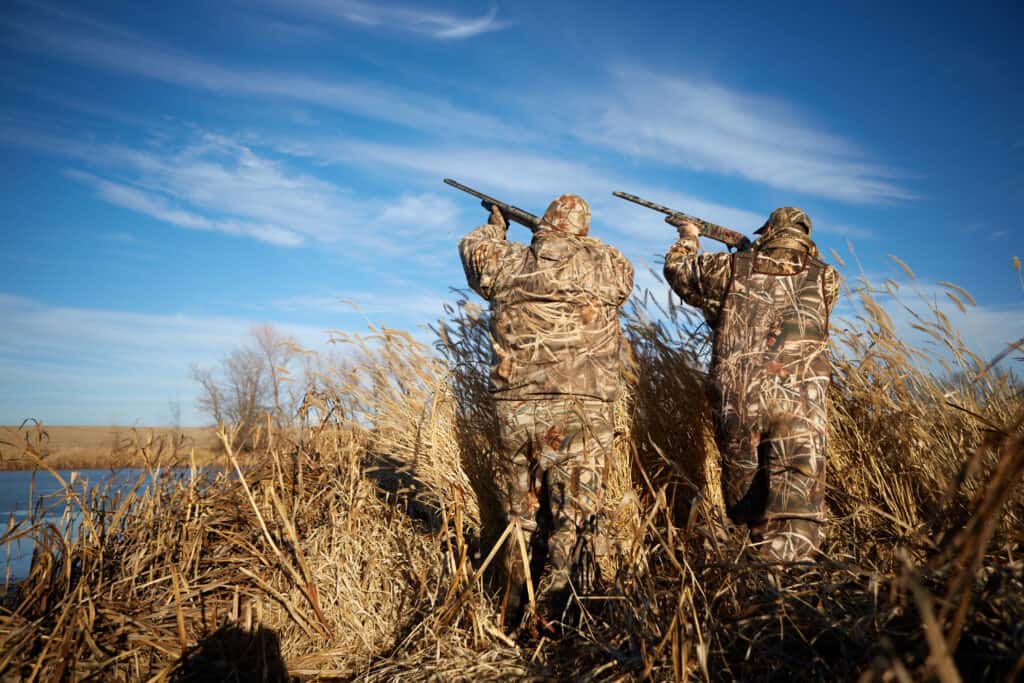
Take the time to scout the area you want to hunt and monitor the movement and rhythms of the waterfowl prior to setting up your blind.
©CLP Media/Shutterstock.com
You could have a sweet 40 duck spread in a fishhook with a half-dozen geese decoys nearby and a blind you can’t see from 10 feet away, but if the weather is crappy and there is no wind stirring ducks, you could be in for a long morning. Some factors for success you can control and others you can’t. Planning ahead, scouting your site, bringing the right gear (and right hunting buddy…shhhhh!) are all things you can do to increase your success. While you can’t control the weather you should keep an eye on the forecast a few days before to judge your chances. Cool, wet, overcast and windy days seem to produce the most movement for ducks and waterfowl.
Where are the Best Places to Duck Hunt in Idaho?

As we mentioned before the best duck hunting in Idaho is clearly along the Snake River.
©Barry Bjork/Shutterstock.com
As we mentioned before the best duck hunting in Idaho is clearly along the Snake River, but don’t overlook the Wildlife Management Areas in the other regions as well. Early hunting in the Coeur d’Alene WMA is good, the C.J. Strike WMA has 11,008 acres of land that is a frequent layover for migrating birds and the Georgetown Summit WMA is a smaller area but is in southern Idaho for mid-season hunting.
Meet the Species: 3 of the Most Common Ducks in Idaho
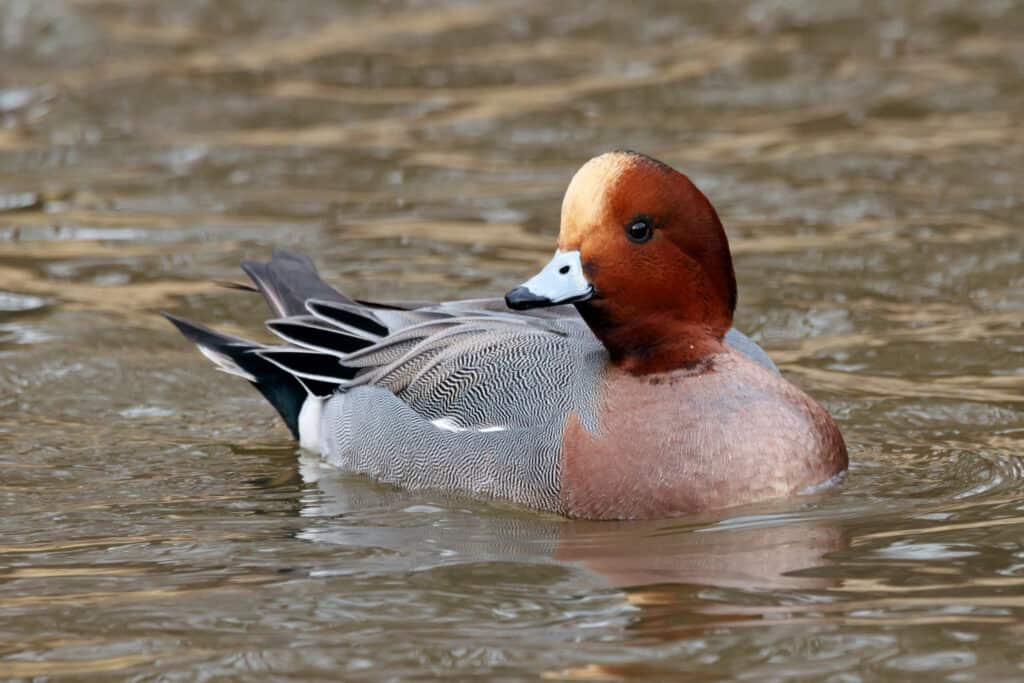
These beautiful birds have a blue-gray beak with a black tip and a green band that flows back from its eye.
©Anton MirMar/Shutterstock.com
- Mallard: The most common duck in the US is the mallard and it is the most harvested in Idaho as well. The male mallard has an emerald green head that shimmers a bit in the sun. In flight you can see the blue edged wings and the white underside with brown to gray backs.
- Wigeon: These beautiful birds have a blue-gray beak with a black tip and a green band that flows back from its eye. They have brownish gray feathers speckled feathers. Their back end is white with black tail feathers.
- Green-winged teal: Not only do green-wing teals have bright green secondary feathers on their wings, but they have a matching green crescent flowing back from its eyes. Their bodies are mostly gray with black and white tail feathers. These smaller ducks have a smaller thin bill to go with their stature.
Up Next
Thank you for reading! Have some feedback for us? Contact the AZ Animals editorial team.

